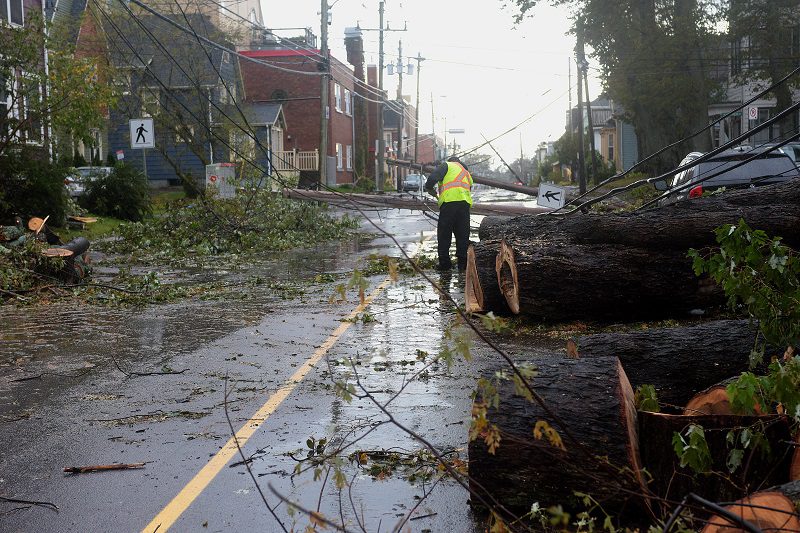How much will Fiona cost Canadian P&C insurers?

Post-tropical storm Fiona could cost the Canadian property and casualty insurance industry between $300 million and $700 million, ratings agency DBRS Morningstar said in a commentary Tuesday.
“Fiona will likely be one of the largest catastrophic events in history for Atlantic Canada,” said Patrick Douville, DBRS’s vice president of insurance. “This would be significant but not large enough to affect the financial strength of the large, nationally diversified insurance groups which are the top participants in the property insurance market in Atlantic Canada.”
Claims adjusters told Canadian Underwriter that while it’s too early to estimate the extent of damage, it is already deemed to be a Cat ($30 million or more in insured damage). The storm caused extensive property damage, flight cancellations and power loss for hundreds of thousands of homes and “will likely produce record insured losses for the Atlantic Canada property and casualty (P&C) insured market.”
Adjusters are already seeing capacity issues on the contractor front and anticipate supply chain issues to plague adjusting losses from the post-tropical storm, as seen in day-to-day claims this year, said Heather Matthews, chief client officer with Crawford & Company (Canada) Inc.
“This storm has hit during what some are calling the ‘Great Resignation,’” she told Canadian Underwriter, referring to employees voluntarily resigning from their jobs during the pandemic. “The insurance industry is not immune to this and we are all stretched to find capacity with adjusting and contracting staff.”
Crawford Canada’s Canadian catastrophe manager Patricia Davis added, “We are working with our local, national, contract and U.S. catastrophe teams to ensure that we can address all of the incoming claims and provide the required services.”
Matthews and Davis were responding to a question about how Fiona compares to past hurricanes such as Juan in 2003 and Dorian in 2019, which hit Halifax and other areas. Both Juan and Dorian led to more than $100 million in insured damage for Canadian P&C insurers.
“From a damage perspective, I think Juan caused more damage, particularly in and around the Halifax area,” added Shelley Landry, Crawford Canada’s regional manager for Quebec and the Maritimes. “I also think people were more prepared for this storm than they were for Juan.
“With regards to P.E.I, Cape Breton and western Newfoundland, I think Fiona was far more damaging,” Landry added. “Fiona was also more widespread than Juan, thus causing damage throughout more parts of Atlantic Canada.”
David Repinski, CEO of CRU Group, said in an interview with CU Tuesday that Fiona is already appearing to be worse than Juan. “I think the storm is going to go down as one of the, if not the, most significant.”
Michael Galea, senior vice president of operations with Sedgwick in Canada, agreed. “In terms of size and strength, Hurricane Fiona was recorded as being the strongest storm to ever strike any part of Canada. Fiona cut a noticeably larger path than others, meaning that as a result, the damage was more severe and spread over a greater section geography.”
Supply chain issues and inflation are also going to making building back slower and more expensive, said Dipika Deol, head of P&C treaty underwriting, Canada & English Caribbean and senior vice president at Swiss Re. “Recovery and rebuilding efforts after a major hurricane are hard enough but rising inflation and supply chain is going to compound that.”
Editor’s Note: This story continues to develop and more information will be forthcoming.
Feature image: A worker begins the process of cleaning up after post-tropical storm Fiona, in Charlottetown, Monday, Sept. 26, 2022. Across the Maritimes, eastern Quebec and in southwestern Newfoundland, the economic impact of the storm’s wrath is still being tallied. THE CANADIAN PRESS/Brian McInnis



